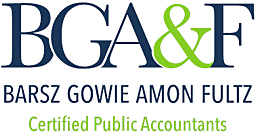When planning your charitable donations, maximizing the tax benefits of those contributions is important.
When filing your tax return, you can use the standard deduction or itemize your deductions. For the 2022 tax year, the standard deduction is $12,950 for individuals, $25,900 for married couples filing jointly, and $19,400 for a head of household.
Charitable contributions can only be deducted if you itemize deductions. Therefore, you must have enough deductions to exceed the standard deduction to receive any tax benefit from your contributions.
What counts as a deduction?
You can deduct donations to 501(c)(3) charities, which includes most religious groups and nonprofits. You can deduct both cash and non-cash donations, including appreciated assets. Unfortunately, you cannot deduct your time or service as a nonprofit volunteer. Any donations to an individual are also not allowed.
How much can you deduct?
For 2022, the deduction limit for cash contributions to qualified charities is 60% of the taxpayer’s adjusted gross income (AGI). The deduction for contributions on non-cash assets held for over one year to qualified charities is 30% of the taxpayer’s AGI. Contribution over these limits may be carried forward for up to five years.
Bunching Deductions
One strategy taxpayers use is to “bunch” deductions into a single tax year to maximize tax deductions. For example, an individual who donates to charity annually may choose to make two years’ worth of contributions within a single tax year. This enables the individual to maximize itemized deductions in year one and take advantage of the standard deduction the following year.
AGI and Tax Bracket Planning
Individuals in higher tax brackets will benefit more significantly from each deduction dollar. One dollar of the deduction is worth up to $.37 of federal tax savings for an individual in the 37% tax bracket, whereas an individual in the 24% tax bracket receives less of a benefit. If your income varies yearly, it may be beneficial to bunch deductions in a high-income year.
Individuals also need to be conscious of the AGI limitations on charitable deductions. If your charitable deductions exceed the AGI limitation, excess deductions can be carried over to the following year. However, this scenario defeats the purpose of bunching charitable deductions into one year. If you are bunching deductions, it is best to do so in a year in which your charitable deductions won’t be limited by the AGI limits.
Donation Strategies
The following are three strategies to consider when making charitable donations.
Donate Appreciated Assets
You can avoid the tax on capital gains when you donate non-cash appreciated assets held for longer than one year, such as stock, to a qualified charity. You can always use cash to purchase more stock, keeping your portfolio intact.
Donor-Advised Funds
Donor-advised funds are also a great way to maximize your charitable deductions. A donor-advised fund is a type of charitable giving that allows donors to make a charitable contribution, receive an immediate tax benefit, and then recommend grants from the fund to charitable organizations over time.
Let’s say you typically donate $10,000 to one or more charities each year. You could contribute $50,000 to a donor-advised fund in a single year, realize the tax deduction, and disburse $10,000 to qualified charities over the next five years.
Qualified Charitable Distribution
Another way to maximize your charitable contributions is to make a qualified charitable distribution. A qualified charitable distribution is a direct transfer of funds, up to $100,000 per year, from your traditional IRA to a qualifying charity. You can elect to have the qualified charitable distribution treated as a required minimum distribution, provided you are 70 ½ or older at the time of distribution. Making a qualified charitable distribution enables you to exclude the distribution from your income, lowering your adjusted gross income. Of course, the distribution cannot be itemized as a charitable deduction; rather, it decreases your taxable income.
While this article provides a brief overview of charitable giving strategies, it is not a substitute for speaking with one of our expert advisors. Please get in touch with us for assistance if you would like more information or help with your tax planning.
